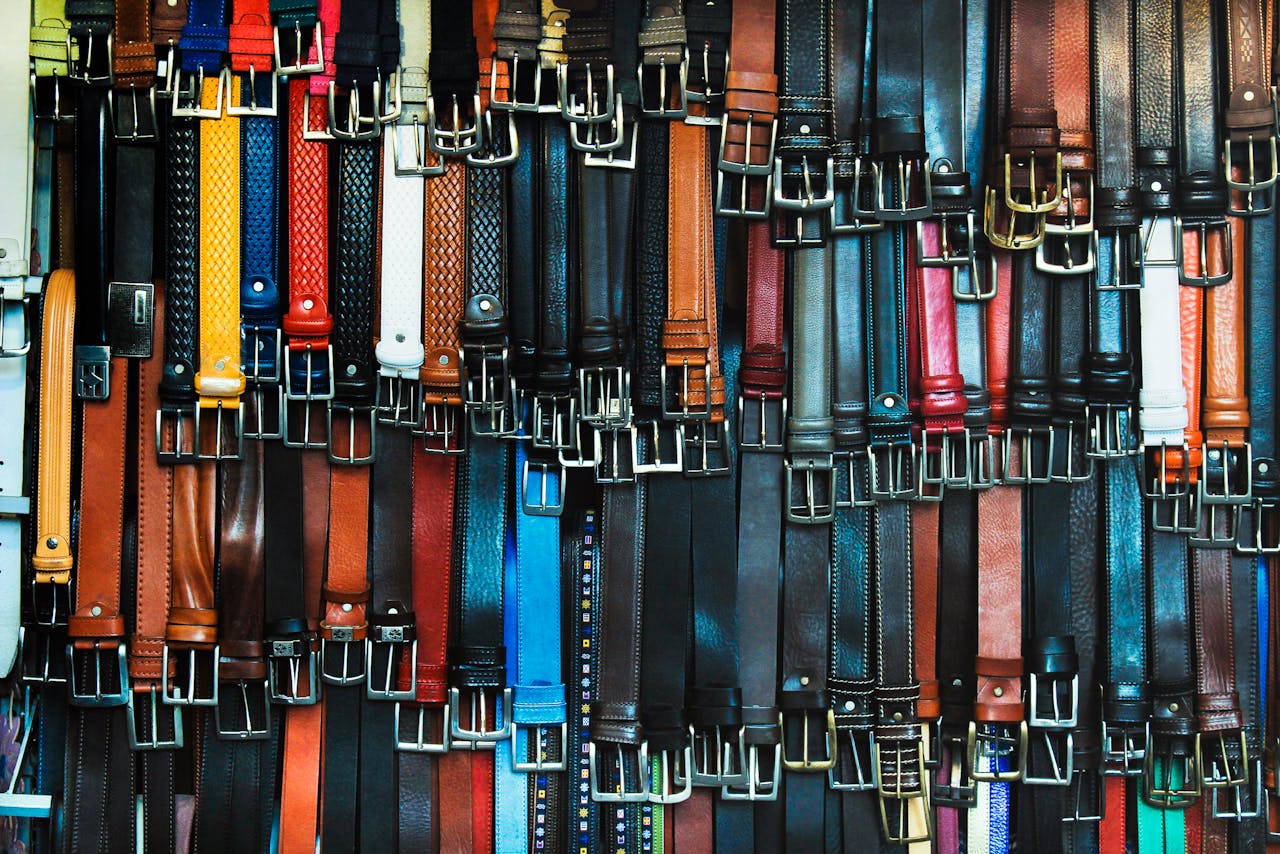
Written by Sonia Su
Short answer: For dress outfits, wear a full-grain leather belt with a frame buckle, width 1.0–1.25″ (2.5–3.2 cm) in black or dark brown to match your shoes. Casual belts run wider (up to 1.5–1.75″ / 3.8–4.4 cm) and use suede, braided, canvas, or rugged buckles. Belt size is usually pants size + 2″ (see chart).
Types of belts • Buckle styles • Width by dress code • Sizing (in↔cm) • Color & finish pairing • Dress-belt picks
Types of belts (men)
Dress belt
- Full-grain or top-grain leather, smooth finish, edge-stitching or clean edge.
- Width: 1.0–1.25″ (2.5–3.2 cm). Buckle: small frame (polished).
Casual leather belt
- Grainier leather or matte finish; contrast stitching optional.
- Width: 1.25–1.5″ (3.2–3.8 cm). Buckle can be matte/brushed or larger.
Suede belt
- Great with loafers/chukkas; reads smart-casual.
- Usually 1.25–1.5″ (3.2–3.8 cm); brushed buckle.
Braided / woven leather
- Flexible fit (holes anywhere); visual texture.
- Smart-casual with chinos, polos, OCBDs.
Canvas / fabric / elastic
- Casual and travel; often with D-ring or slide buckles.
- Pairs with shorts, denim, weekend looks.
Western / statement
- Decorative plates or large buckles; casual only.
- Keep the rest of the outfit minimal.
Types of belt buckles
| Buckle | How it works | Best for |
|---|---|---|
| Frame (prong) | Prong goes through holes; classic. | Dress & casual (smaller for dress). |
| Box/plate | Decorative face; hook or clasp. | Western / statement. |
| O-ring / D-ring | Fabric threaded through rings. | Canvas/fabric belts. |
| Auto / ratchet | Track system; micro-adjustments. | Convenience; business-casual. |
| Reversible | Twist buckle; two colors in one. | Travel / minimal wardrobe. |
Belt width by dress code
| Dress code | Recommended width | Notes |
|---|---|---|
| Formal / dress | 1.0–1.25″ (2.5–3.2 cm) | Slim, polished frame buckle; smooth leather. |
| Business-casual | 1.25–1.5″ (3.2–3.8 cm) | Slightly more substantial; matte/brushed metals OK. |
| Casual | 1.5–1.75″ (3.8–4.4 cm) | Rugged leather, suede, braided, canvas. |
Belt sizing (inches ↔ centimeters)
Rule of thumb: belt size ≈ pants size + 2″. Most brands measure from the buckle end to the middle hole.
| Pants waist (in) | Belt size (in) | Belt size (cm) |
|---|---|---|
| 28 | 30 | 76 |
| 30 | 32 | 81 |
| 32 | 34 | 86 |
| 34 | 36 | 91 |
| 36 | 38 | 97 |
| 38 | 40 | 102 |
| 40 | 42 | 107 |
DIY: Measure from the inside of the buckle to the hole you use—match that to the maker’s size chart.
Color & finish pairing (fast rules)
| Shoes | Belt color & finish | Notes |
|---|---|---|
| Black leather | Black, smooth, polished buckle | Dress & formal default. |
| Dark brown leather | Dark brown, smooth or light grain | Match buckle tone to watch/jewelry. |
| Tan / light brown | Tan to medium brown; matte/brushed buckle OK | Business-casual / casual. |
| Burgundy / oxblood | Burgundy belt; polished or brushed | Dressy alternative to brown. |
| Suede loafers/chukkas | Suede belt in same family | Texture match > exact shade. |
Dress-belt picks (quick)
Full-grain Black Dress Belt (1.25″)
Smooth leather, polished frame buckle, suits & interviews.
Dark Brown Dress Belt (1.25″)
Pairs with brown derbies/loafers; edge-stitching.
Reversible Black/Brown (Travel)
One belt, both colors; compact for trips.
We may earn a commission from links—at no cost to you.
Dial in the rest of the outfit: get your size with the Fit Guide, pick a staple white slim-fit dress shirt, or browse Ultra Slim shirts.

History of Belts
Belts for men have a long and varied history, evolving from practical utility to fashionable accessories. The concept of using a belt to secure clothing dates back thousands of years, with early examples found in ancient civilizations such as Egypt and Mesopotamia. These early belts were typically made from natural materials like leather or cloth and served a primarily functional purpose, keeping garments in place.
During the Middle Ages, belts became more prevalent as clothing styles evolved, with belts often adorned with elaborate buckles and decorations as a symbol of status and wealth. Throughout the Renaissance and into the 17th and 18th centuries, belts remained an essential part of men's attire, especially for soldiers and aristocrats.
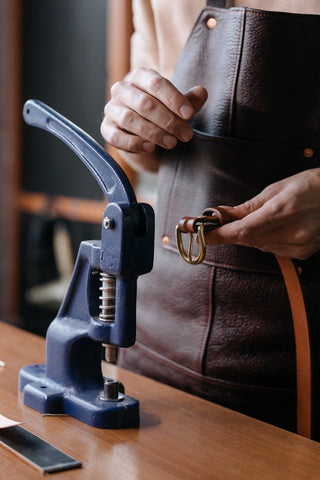
The Industrial Revolution brought advancements in manufacturing techniques, allowing for the mass production of belts. This led to greater accessibility and affordability, making belts a staple accessory for men of all social classes.
In the 20th century, belts continued to evolve both in terms of style and functionality. They became more standardized in size and design, with various materials such as leather, canvas, and synthetic fabrics being used. Belts also became an important fashion statement, with different styles emerging to complement various clothing trends.
Today, belts for men are available in a wide range of styles, from classic leather belts for formal occasions to casual fabric belts for everyday wear. They remain an essential accessory in men's fashion, providing both practical functionality and aesthetic appeal.
Types of Belts for Men
From leather belts to casual belts, here are some common types of belts for men, each offering its unique style and functionality to suit different occasions and preferences:
Classic Leather Belt
Versatile and timeless, casual leather belts are perfect for everyday wear. A leather belt typically features a simple buckle and come in various colors to complement different outfits.
- Material: Leather, often cowhide but can include exotic skins like alligator or ostrich.
- Design: Classic and versatile, with options for smooth, textured, or embossed finishes. Buckles can vary from simple to ornate.
-
Function: Ideal for formal and business professional attire, leather belts provide durability, sophistication, and timeless style.
Fabric Belt
Crafted from various textiles such as cotton, nylon, or polyester, and often feature vibrant patterns or prints. They're lightweight, comfortable, and perfect for adding a fun and casual touch to summer outfits.
- Material: Various fabrics like nylon, polyester, or elastic.
- Design: Sporty and adaptable, with options for solid colors, stripes, or printed patterns. Buckles are typically lightweight and functional.
- Function: Designed for active lifestyles and athletic wear, fabric belts offer flexibility, moisture-wicking properties, and a comfortable fit during physical activities.
Dress Belt
Designed for more formal occasions, dress belts are usually made from high-quality leather with sleek and understated buckles. This type of leather belt often comes in classic colors like black, brown, or tan, ideal for pairing with suits, collared dress shirts, and dress trousers.
- Material: High-quality leather in smooth or textured finishes.
- Design: Elegant and refined, with understated details and minimalist buckles. Colors often include classic black, brown, or shades of tan.
- Function: Essential for formal occasions, business attire, or dressing up semi-formal outfits, dress belts offer sophistication, polish, and a finishing touch of professionalism to tailored ensembles.
Reversible Belt
Offering double the versatility, reversible belts feature two different colors or textures on each side of the strap. This allows you to easily switch up your look depending on your outfit or mood.
- Material: Typically leather or synthetic materials, designed to be reversible with different colors or textures on each side.
- Design: Versatile and practical, with dual-sided options for added flexibility and styling versatility. Buckles are often detachable for easy flipping.
- Function: Offers the convenience of two belts in one, allowing wearers to switch between colors or textures to suit different outfits or occasions.
Canvas Belt
Casual and durable, canvas belts are ideal for outdoor activities or relaxed weekend wear. They often feature a military-inspired buckle and come in a range of colors and patterns.
- Material: Woven canvas or cotton fabric.
- Design: Casual and rugged, with options for solid colors, stripes, or patterns. Buckles are typically simple and utilitarian.
- Function: Suited for casual outfits and outdoor activities, canvas belts offer comfort, flexibility, and a more relaxed aesthetic.
Suede Belt
Adding texture and sophistication to your outfit, suede belts are perfect for adding a touch of luxury to casual or semi-formal ensembles. Suede belts pair well with jeans, chinos, or linen trousers.
- Material: Suede leather, known for its soft, napped texture.
- Design: Luxurious and tactile, with a velvety finish. Buckles for suede belts may vary in style but often complement the suede's richness.
- Function: Adds texture and visual interest to both casual and smart-casual attire, providing a touch of refinement and sophistication.
Braided Belt
Offering a more relaxed and bohemian vibe, braided belts feature interwoven strands of leather or fabric. A braided belt is perfect for adding a rustic touch to casual outfits or adding definition to loose-fitting garments.
- Material: Strips of leather or fabric intricately woven together.
- Design: Textural and eye-catching, with a distinctive braided pattern. Braided belt buckles can range from traditional to modern styles.
- Function: Adds a touch of casual sophistication to denim and dressier slacks, providing a unique focal point to the outfit while offering a comfortable and flexible fit.
Western Belt
Inspired by cowboy style, Western belts typically feature intricate tooling, decorative buckles, and embellishments like conchos or studs. Westerns belts are a bold choice that adds personality to any outfit.
- Material: Typically made of thick leather with intricate tooling or decorative conchos.
- Design: Embodies the rugged aesthetic of the American West, featuring bold designs, patterns, and embellishments. Buckles for Western belts are often oversized and ornate.
- Function: Perfect for Western-themed events, cowboy attire, or adding a statement piece to casual wear. Western belts exude a sense of cowboy charm and authenticity.
Golf Belt
Designed with functionality in mind, golf belts often feature stretchy or adjustable materials for comfort during physical activity. They come in various colors and may include features like removable ball markers or divot tools.
- Material: Usually made of leather, synthetic blends, or stretchy materials like elastic.
- Design: Sporty yet stylish, with options for solid colors, stripes, or golf-themed motifs. Buckles are often sleek and streamlined.
- Function: Specifically designed for golfers, these belts provide flexibility, comfort, and support during swings while adding a touch of athletic flair to golfing attire.
Ratchet Belt
Ratchet belts like this one introduce a revolutionary approach to belt design, featuring a sliding mechanism that allows precise, micro-adjustable sizing.
Unlike traditional belts with fixed holes, these belts use an interior metal track with interlocking teeth, enabling wearers to achieve a perfect fit with ease.
Key Differences
- Unlimited micro-adjustments vs. limited hole positions
- Sleeker, more modern buckle design
- Reduced wear and tear on leather
- More consistent tension and comfort
- Professional look suitable for multiple settings
Refer to our other guide on whether you should match your belt with your shoes. Consider matching your belt with fun dress socks or black dress socks.
How to Measure Belt Size
To measure belt size for men, follow these steps:
- Use an existing belt: If you have a belt that fits you well, you can use it to determine your belt size. Lay the belt flat on a surface and measure from the point where the buckle meets the belt's edge to the hole you typically use when wearing the belt. This measurement represents your belt size.
-
Measure your waist: If you don't have a belt to use as a reference, you can measure your waist directly. Use a flexible measuring tape and wrap it around your waist at the point where you typically wear your belt. Make sure the tape measure is snug but not too tight. Note the measurement in inches or centimeters.

- Add or subtract inches: Once you have your waist measurement, you may need to adjust it to determine your belt size. For most belts, you'll want to add a few inches to your waist measurement to account for the thickness of your clothing and provide a comfortable fit. Typically, adding 2 inches (or about 5 centimeters) to your waist measurement is a good rule of thumb.
- Consult the size chart: Different brands and manufacturers may have slightly different sizing standards, so it's essential to refer to their size charts when selecting a belt. Match your adjusted waist measurement to the corresponding belt size on the size chart to ensure a proper fit.
- Try it on: Once you've determined your belt size, try on the belt to confirm the fit. Fasten it using the middle hole if it's a prong buckle belt, ensuring that it's snug but not too tight. You should be able to fit a couple of fingers between your waist and the belt for comfort.
By following these steps, you can accurately measure your belt size and ensure that your belt fits comfortably and securely. Check out our separate guides on how to measure belt size and belt sizes for men.

How to Put on a Belt
Putting on a belt is a straightforward process. Here's a step-by-step guide:
- Thread the belt through the belt loops: Start by inserting the end of the belt without the buckle through the belt loops on your pants. Make sure the belt is oriented correctly, with the outer side facing outward.
- Determine the tightness: Decide how tight you want the belt to be around your waist. This will depend on personal preference and the fit of your pants.
- Insert the end into the buckle: Once you've determined the desired tightness, insert the end of the belt into the buckle. The buckle typically has a metal prong or post that fits into one of the holes on the belt to secure it in place.
- Adjust the fit: Pull the loose end of the belt through the buckle until it feels snug around your waist. Make any necessary adjustments to ensure a comfortable fit.
- Secure the belt: Once you're satisfied with the fit, fasten the belt by pressing the prong or post into one of the holes on the belt. The buckle may have multiple holes to allow for different levels of tightness.
- Tuck in the loose end: If there's excess length of the belt hanging after securing it, tuck it through the loop on the opposite end of the belt or through any additional loops on your pants to keep it tidy.
- Check the alignment: Finally, ensure that the belt is straight and centered around your waist for a polished look.
With these simple steps, you can easily put on a belt and complete your outfit with style and functionality.

All about Belt Buckles
Belt buckles are the fastening mechanisms used to secure belts around the waist. They come in a variety of shapes, sizes, and designs, serving both functional and decorative purposes.
Typically made from metal, belt buckles consist of a frame, which holds the belt in place, and a movable tongue or prong that inserts into one of the holes on the belt to secure it. Some buckles feature intricate designs, engravings, or embellishments, while others are more minimalist in style.

Buckles can be interchangeable, allowing wearers to customize their belts with different buckles to suit various outfits and occasions. Overall, a belt buckle plays a crucial role in both the functionality and aesthetics of belts, adding a touch of personality and style to any ensemble.
Here are some common types of buckles:
-
Prong Buckle: Also known as a single-prong buckle, this type features a metal frame with a single tongue or prong that inserts into one of the holes on the belt to secure it in place. Prong buckles are simple and versatile, making them popular for everyday wear.

- Double-Prong Buckle: Similar to the single-prong buckle, the double-prong buckle has two tongues or prongs that insert into the belt holes, providing extra stability and security. This type of buckle is often found on wider belts and is favored for its rugged appearance.
- Frame Buckle: Frame buckles encase the end of the belt within a metal frame, securing it in place without the need for a separate prong. These buckles often feature intricate designs and can add a decorative element to the belt.
- Box Frame Buckle: Box frame buckles are similar to frame buckles but have a box-like shape that surrounds the belt end. They provide a secure and stable fastening and are commonly seen on Western-style belts.
- Plate Buckle: Plate buckles consist of a flat metal plate that attaches to the belt with screws or rivets. They come in various shapes and sizes and are often used for customization, as they can be easily engraved or embellished.
- Military Buckle: Military buckles, also known as clamp buckles or friction buckles, feature a hinged metal plate that clamps down on the belt to secure it in place. They're commonly used in military and tactical belts for their quick-release functionality.
- Slide Buckle: Slide buckles, also called slide or friction buckles, consist of a metal or plastic bar that slides along the belt strap to adjust the tightness. They're commonly found on belts made from webbing or fabric.
Each type of belt buckle offers its own advantages in terms of style, functionality, and ease of use, allowing wearers to choose the buckle that best suits their needs and preferences.
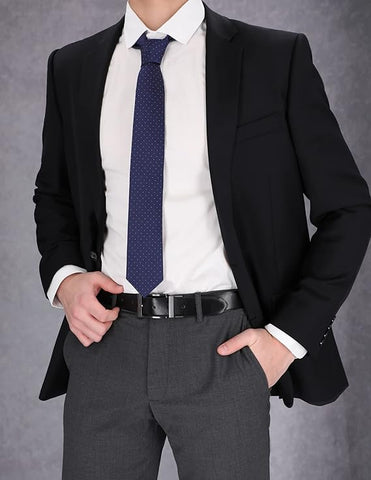
The Anatomy of Belt Widths: Finding Your Perfect Fit
Narrow Belts (1 inch or less)
Narrow belts are the epitome of refined elegance. Designed for formal and sophisticated looks, these slim belts are your go-to for black-tie events, tailored suits, and sleek professional attire.
They create a clean, minimalist line that complements slim-fit clothing and communicates understated luxury.
Standard Belts (1-1.5 inches)
The Swiss Army knife of belt widths, standard belts are the most versatile option in your wardrobe. Whether you're heading to a business meeting, a casual dinner, or transitioning between professional and social settings, these belts seamlessly adapt.
They work harmoniously with most pants, from dress trousers to chinos, making them a must-have for every man.

Wide Belts (1.5-2 inches)
Wide belts make a bold statement. Perfect for casual and rugged styles, they're ideal for those who want to add visual weight and presence to their outfit.
Think weekend wear, outdoor adventures, or a night out in more relaxed settings. These belts work exceptionally well with jeans, cargo pants, and are a staple in western and workwear fashion.
Extra Wide Belts (2+ inches)
Reserved for specialized contexts, extra-wide belts are less about fashion and more about function.
Commonly seen in tactical gear, western wear, and heavy-duty work environments, these belts prioritize utility over style. They're designed to support equipment, provide back support, or simply withstand tough working conditions.
Choosing the Right Width: A Style Strategy
Selecting the perfect belt width isn't just about personal preference—it's about proportion, context, and the message you want to convey. Consider these factors:
- Body Type: Larger frames can handle wider belts, while smaller male body types look best in narrower styles.
- Outfit Context: Match the belt width to the formality of your clothing.
- Personal Style: Let your belt reflect your personality and fashion sensibilities.
- Comfort: Ensure the width doesn't restrict movement or feel uncomfortable.
Pro Tip: A good rule of thumb is to choose a belt width that matches or slightly complements the belt loops of your pants. This creates a harmonious, intentional look that shows attention to detail.
Bottom Line to Types of Belts
Selecting the right type of belt is essential for both functionality and style. Whether you opt for a classic leather belt, a casual fabric belt, or a rugged work belt, it's important to consider the occasion, your personal style, and the functionality you require.
A well-chosen belt can add a finishing touch to your outfit while also serving its practical purpose of holding your pants in place. By understanding the different types of men's belts available and their respective characteristics, you can make informed decisions that enhance your overall look and comfort.
Next time you're in need of a belt, take a moment to consider the options and choose the one that best suits your needs and style preferences.
Frequently Asked Questions about Types of Belts
Are there different types of belts?
Yes, there are various types of belts designed for different purposes and styles. Some common types include dress belts, which are typically narrow and formal, often worn with suits or dress trousers; casual belts, which are wider and more relaxed, suitable for jeans or casual pants; and utility belts, which are functional and often used for outdoor activities or work. Additionally, there are specialized belts for specific purposes like weightlifting belts for support during workouts or fashion belts for adding flair to an outfit.
What are belts without holes called?
Belts without holes are commonly referred to as "ratchet belts" or "track belts." These belts feature a track system or a mechanism that allows for precise adjustment of the belt's tightness, eliminating the need for traditional belt holes. They offer a customizable fit and a sleek, modern appearance.
Are braided belts in style?
Yes, braided belts are still in style and can add a touch of texture and interest to an outfit. They are versatile accessories that can complement both casual and semi-formal looks. However, like any fashion trend, their popularity may fluctuate over time, so it's always a good idea to consider personal style and the overall aesthetic of the outfit when choosing to wear one.
Why do belts only have 5 holes?
Belts typically have five holes because they provide a range of adjustability to accommodate different waist sizes and preferences for tightness or looseness. The five-hole design allows for incremental adjustments, giving wearers the flexibility to find the most comfortable fit. Additionally, this standardization makes it easier for belt manufacturers to produce belts that are universally usable by a wide range of people.

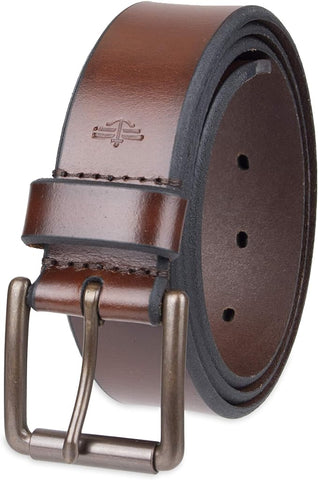
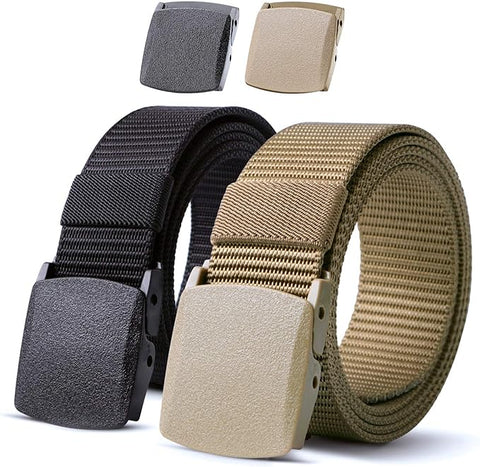
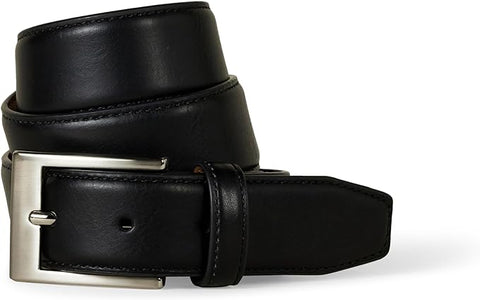
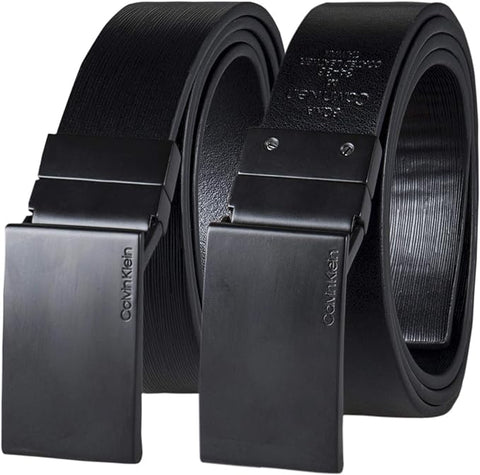

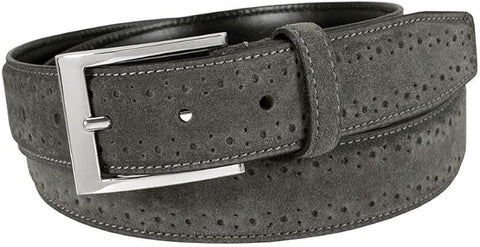

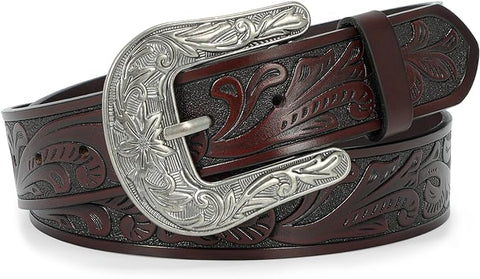


Comments (0)
Back to News